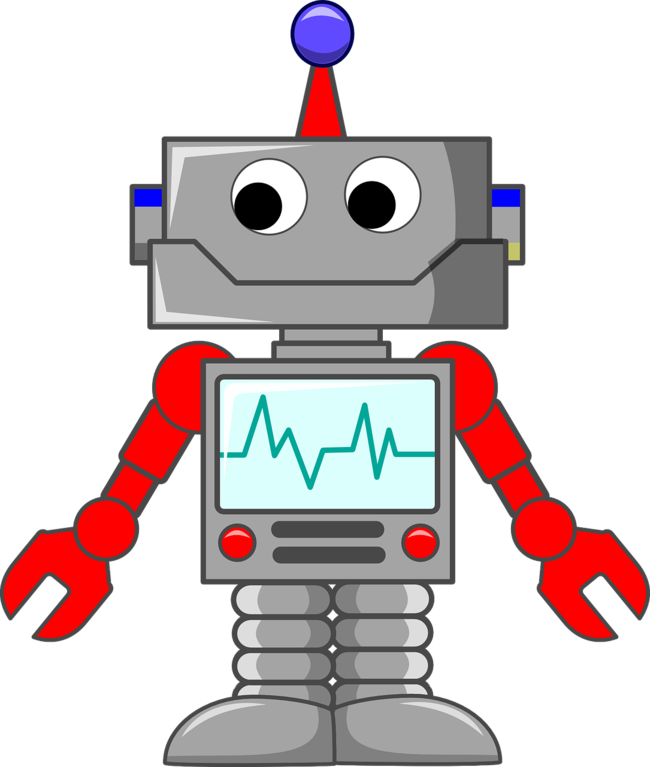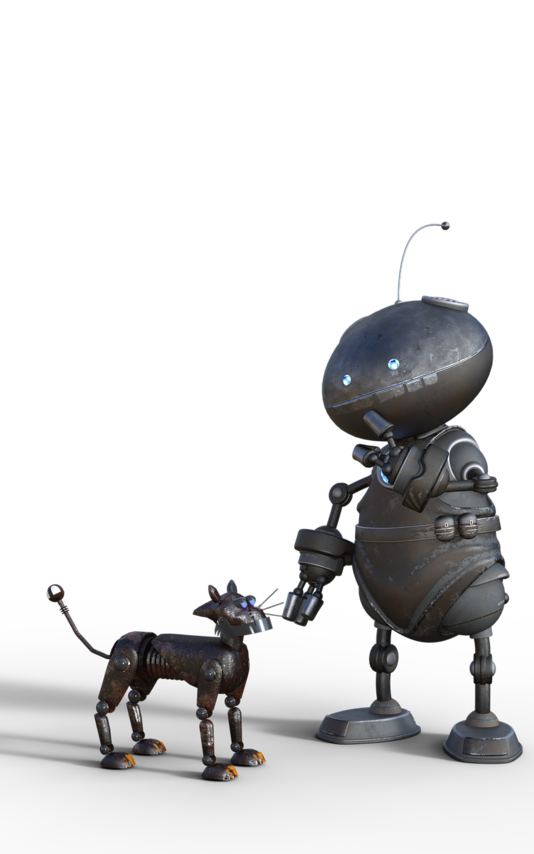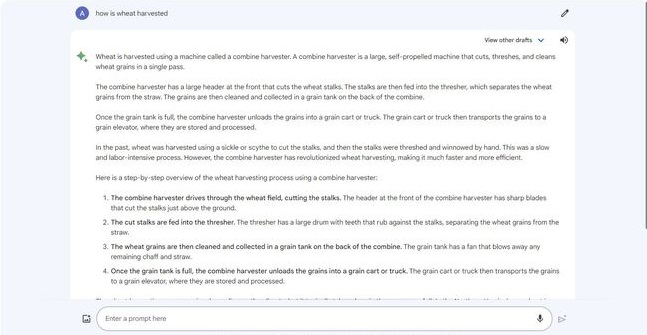
There is a huge amount of hoo-haa being thrown around everywhere about Artificial Intelligence at the current time.
You can’t go anywhere without even basic software applications banging on about it. For example, I can’t even open a PDF document on my computer without being told that the software now has an “AI Assistant.”
It’s totally the flavour of the month, just like everything is when it supposedly “explodes” onto the scene.
Of course, when you look at anything that generates fear as well as a bit of a frenzy like this, you often find that the reality of the concept is very different to what is bandied about in the media about it.
Alyssa Schroer defines Artificial Intelligence as a wide-ranging branch of computer science concerned with building smart machines capable of performing tasks that typically require human intelligence in an article titled Artificial Intelligence at Built In.
AI isn’t actually new, it has simply been expanded upon over time. As Maria Diaz states in a ZDNet article entitled What is AI? Everything to Know About Artificial Intelligence, AI has actually been around since the 1950s.
Maria comments that the lovely Alexa and Siri have of course been using AI for a while. Personally, I don’t use Alexa or Siri, because I don’t want to listen to robots and I actually find both of them bloody annoying.

But AI definitely does have some advantages, and if you can access AI software free of charge and you use it in a wise and discretionary manner, go for it.
Some of the beneficial uses of AI include:
1. Spelling and Grammatical Suggestions
AI is behind text editing software such as spell check and the auto correct functions that we’ve had for many years already. Sometimes it can be useful if it picks up a stray spelling mistake that we miss, or provides a helpful suggestion on expressing a sentence in a more direct way. However, as we all know, AI is only as smart as the information it has been fed, and there are times when it’s just plain wrong or it just shits us to tears. Sometimes it will identify a “spelling” mistake simply because you are using the name of a business that it doesn’t recognise, or it will make a grammatical suggestion that doesn’t work in the context of the sentence or paragraph that you’ve written.
I assess every suggestion made, because I am the human being creating the work and *uck it all, I know best.

2. Additional Information on a Subject
You can most definitely ask AI programs to spit out information on a topic to help you identify elements of the subject that you may have missed, or to get possible other angles on how a topic could be covered. In this way, AI does help with brain storming. Though, as human beings with limitless intelligence, we of course have a variety of different brainstorming methods at our finger tips either way.
And if you do use AI software for brainstorming purposes, I’d also recommend searching the topic online using a search engine as you would normally too. This is because searching online will give you less sanitised and robotic results, as online searches will pick up articles written by people who have actually used their human capability to write about the topic in a way that appeals to our emotions and captures our imaginations, and is far more entertaining to read.


Human beings are pretty amazing creatures. We have a mind, a soul and a body. We even have intuition, also known as our own internal guidance system, that we can tap into. We generate marvellous ideas, we feel a wide diversity of emotions, and we can produce multiple solutions to problems. And we consume information as a human being, using the information we are presented with to assess the trustworthiness and quality of a business, and what it is really offering us.

This brings us to the heart of the matter. If you throw a subject into AI software and then dump whatever it spits out onto your website, you are offering dry, lifeless, regurgitated robot text for your valued clients and customers. People can smell AI generated text a mile off, and if you do so you can easily dismantle the trust you have carefully built up with your awesome clients.
This strategy will also do nothing for your search engine rankings. As Rodolfo Delgado at Forbes states in his article The Risk of Losing Unique Voices: What is the Impact of AI on Writing?


Another key search engine optimisation problem associated with getting Artificial Intelligence to “write” an article for you is that by definition, you are simply regurgitating information that is already available, rather than contributing a new resource to the internet. This is punished by search engines, because they are looking for content that is new and valuable to internet users. Google’s Search Engine Optimisation (SEO) Starter Guide states under the sub heading Create fresh, unique content that, “New content will not only keep your existing visitor base coming back, but also bring in new visitors.” It goes on to tell you to avoid, “Rehashing (or even copying) existing content that will bring little extra value to users.” The guide also states the following under the subheading Make your site interesting and useful, “Creating compelling and useful content will likely influence your website more than any of the other factors discussed here. Users know good content when they see it and will likely want to direct other users to it. This could be through blog posts, social media services, email, forums, or other means.”
Finally, search engines also love articles from people with experience and skills in their field, not lifeless drivel from robots. If you simply post information on a topic that comes straight from generative AI software, you are not providing authoritative or “expert” information from a strong source. If you instead write your own original content as an experienced business owner who knows your field and you include your details at the bottom of the article, you are. When Google ranks websites, it looks for authoritative information, according to its own Search Engine Optimisation (SEO) Starter Guide. Under the subheading, Make expertise and authoritativeness clear, the guide states that the “Expertise and authoritativeness of a site increases its quality. Be sure that content on your site is created or edited by people with expertise in the topic.”

Essentially, when AI isn’t used in a wise and sensible manner as a tool rather than as a solution, business owners can risk publishing embarrassing disasters. Kirk McElhearn in his article, “Should Writers Use AI Tools?” asked AI software to give him an idea for a mystery novel. The software came back with a story about a prosecutor who investigates the murder of a famous novelist who is found dead in his study, a bullet through his chest. When Kirk asked the software for a male name for the character, it provided a list of common South Korean male names, which of course wouldn’t make any sense at all if they were used in this story, and would definitely cause a good deal of embarrassment.
The other problem with Artificial Intelligence is that it generates information that doesn’t understand cultural terminology differences, is often way too wordy, and is sometimes downright incorrect.
For example, I asked an AI software program the question, “How is wheat harvested?,” as per the below screenshot.

The rather extensive response to my question is recorded below:
Wheat is harvested using a machine called a combine harvester. A combine harvester is a large, self-propelled machine that cuts, threshes, and cleans wheat grains in a single pass.
The combine harvester has a large header at the front that cuts the wheat stalks. The stalks are then fed into the thresher, which separates the wheat grains from the straw. The grains are then cleaned and collected in a grain tank on the back of the combine.
Once the grain tank is full, the combine harvester unloads the grains into a grain cart or truck. The grain cart or truck then transports the grains to a grain elevator, where they are stored and processed.
In the past, wheat was harvested using a sickle or scythe to cut the stalks, and then the stalks were threshed and winnowed by hand. This was a slow and labor-intensive process. However, the combine harvester has revolutionized wheat harvesting, making it much faster and more efficient.
Here is a step-by-step overview of the wheat harvesting process using a combine harvester:
- The combine harvester drives through the wheat field, cutting the stalks. The header at the front of the combine harvester has sharp blades that cut the stalks just above the ground.
- The cut stalks are fed into the thresher. The thresher has a large drum with teeth that rub against the stalks, separating the wheat grains from the straw.
- The wheat grains are then cleaned and collected in a grain tank on the back of the combine. The grain tank has a fan that blows away any remaining chaff and straw.
- Once the grain tank is full, the combine harvester unloads the grains into a grain cart or truck. The grain cart or truck then transports the grains to a grain elevator, where they are stored and processed.
The wheat harvesting season varies depending on the climate, but it typically takes place in the summer or fall. In the Northern Hemisphere, wheat is typically harvested in July or August, while in the Southern Hemisphere, wheat is typically harvested in December or January.
Wheat is one of the most important food crops in the world, and it is used to make a variety of products, including bread, pasta, and cereal. The efficient harvesting of wheat is essential to ensuring that there is enough food to feed the global population.

Unfortunately, the above information doesn’t serve an Australian audience at all. In Australian farming, we abbreviate, and we know combine harvesters as “headers.” No one uses the term combine harvester in the real world of Australian farming. Wheat is also never stored in grain elevators at step four of the process, it’s transported to the local wheat bin, or stored in grain sausage bags, wheat silos or field bins. If you were an agricultural business in Australia and you slapped the above text up on your site, you’d be laughed out of town.
I also asked AI software to create a 100 word summary of an article I’d written. The article had information that applied to lambs in a section, and information that applied to calves in another section. The summary I was delivered jumbled all the content together, utilising commonalities in some of the information to create sub topics that applied to both lambs and calves. This made the summary unworkable, because human beings reading the summary will be looking specifically for information that applies to lambs and specific information that applies to calves. The summary was effectively useless. I’ve also tried requesting other summaries from AI and all of them have come back a bit of a scrambled egg jumble of words that miss the most salient points. So I’m not a huge fan of using AI for this purpose either.
Overall though, the quality of the information you present to your clients and customers is important, because it represents the beautiful business you created. As a result, text that you present on your website or socials is most definitely not the sort of thing that should be left to a computer processor or a machine without human supervision.

And you certainly don’t want to present information that actually sends customers fleeing to your competition in a disillusioned and disappointed flurry.
For example, the below excerpt from blog article on the topic of putting flat pack furniture together would send me away from a business’s website, never to return. While I have no idea whether it was written by a human being or AI, it is most definitely poorly structured and poorly written. Such poor quality text is often associated with massive corporate content mills who market themselves as a cheap and convenient solution but offer a poor product and pay their writers shit. I also find it condescending, because we all know that we don’t need training to put flat pack furniture together, for God’s sake. The text also repeats the suggestion of reading the instructions throughout in a redundant fashion, rather than including this advice where it would’ve been most useful at the beginning of the article (even though all of us will ignore this advice, ha ha).
It can be a good idea to find out how much assembly is required before you purchase an item. Some pieces will require more than one person to assemble and it’s best to follow the instructions.
Putting furniture together mostly involves screwing bolts into planks so you can slot the planks into one another. It isn’t electrical engineering, and you won’t require any training to do it.
Before you begin, make sure you have all of the necessary tools. It’s common for flat-pack furniture to come with Allen keys. You may need your own screwdriver, too. Be sure to keep all of the screws, bolts and dowels in their little bags until they’re ready to use and store them in a safe place. Next, read the instructions from start to finish. Better yet, read them three times. This is one situation where you want to know all the spoilers before you get started!
Jesus!!!

In summary, AI software should be used only as a tool, and never as a comprehensive solution.
We are beautiful, creative, thinking and feeling beings, and AI is just something that we should only use prudently, and only if it suits us.
© Annemaree Jensen